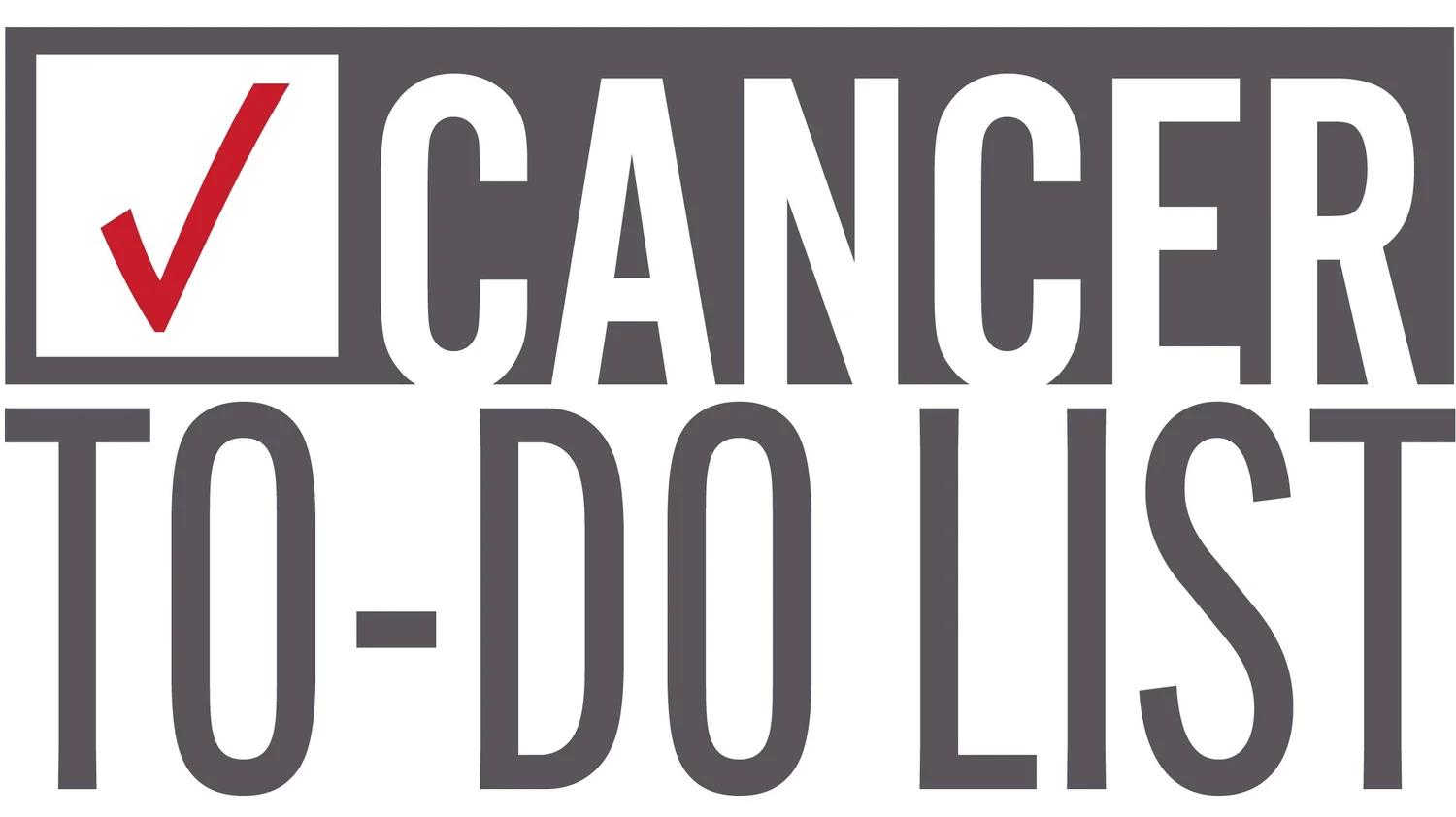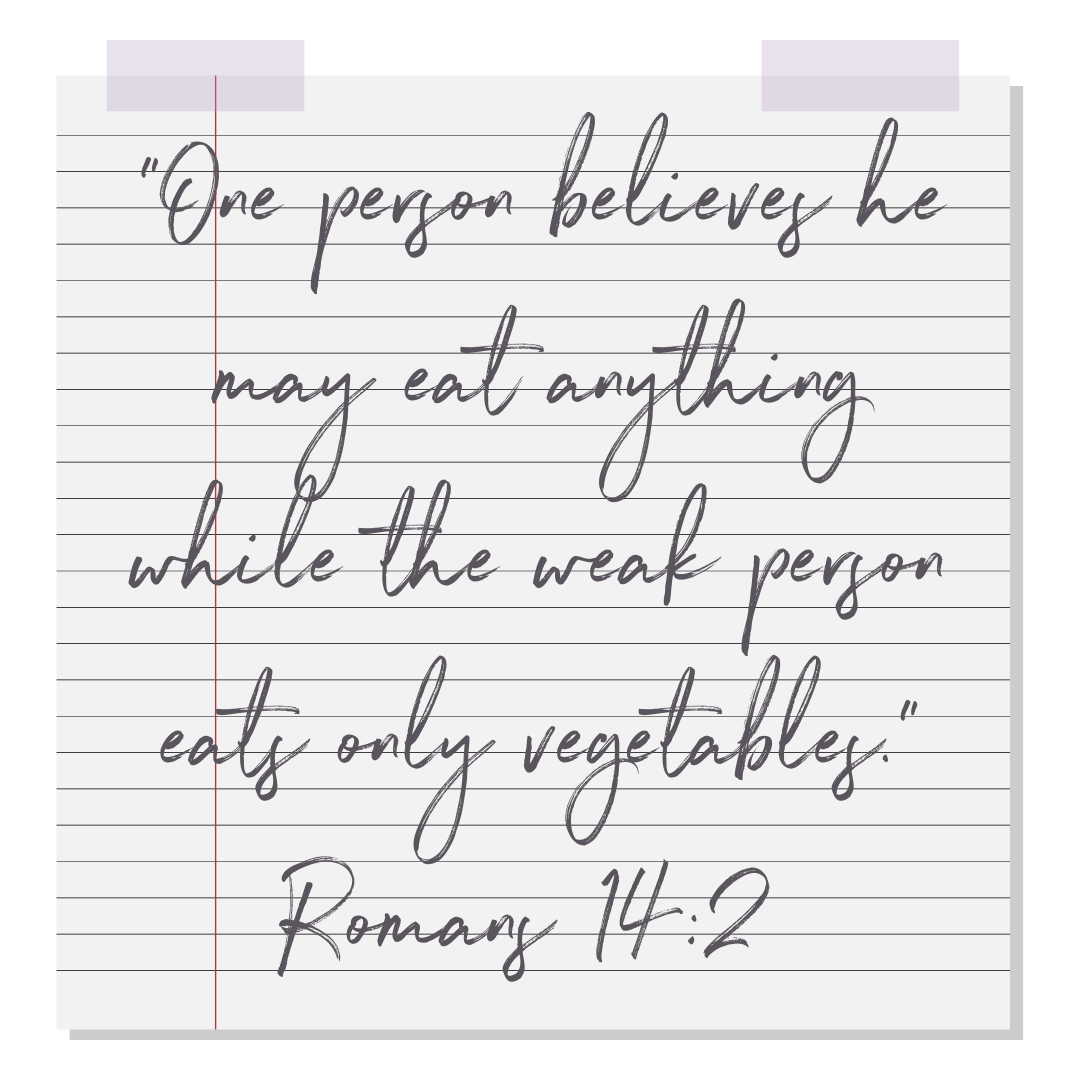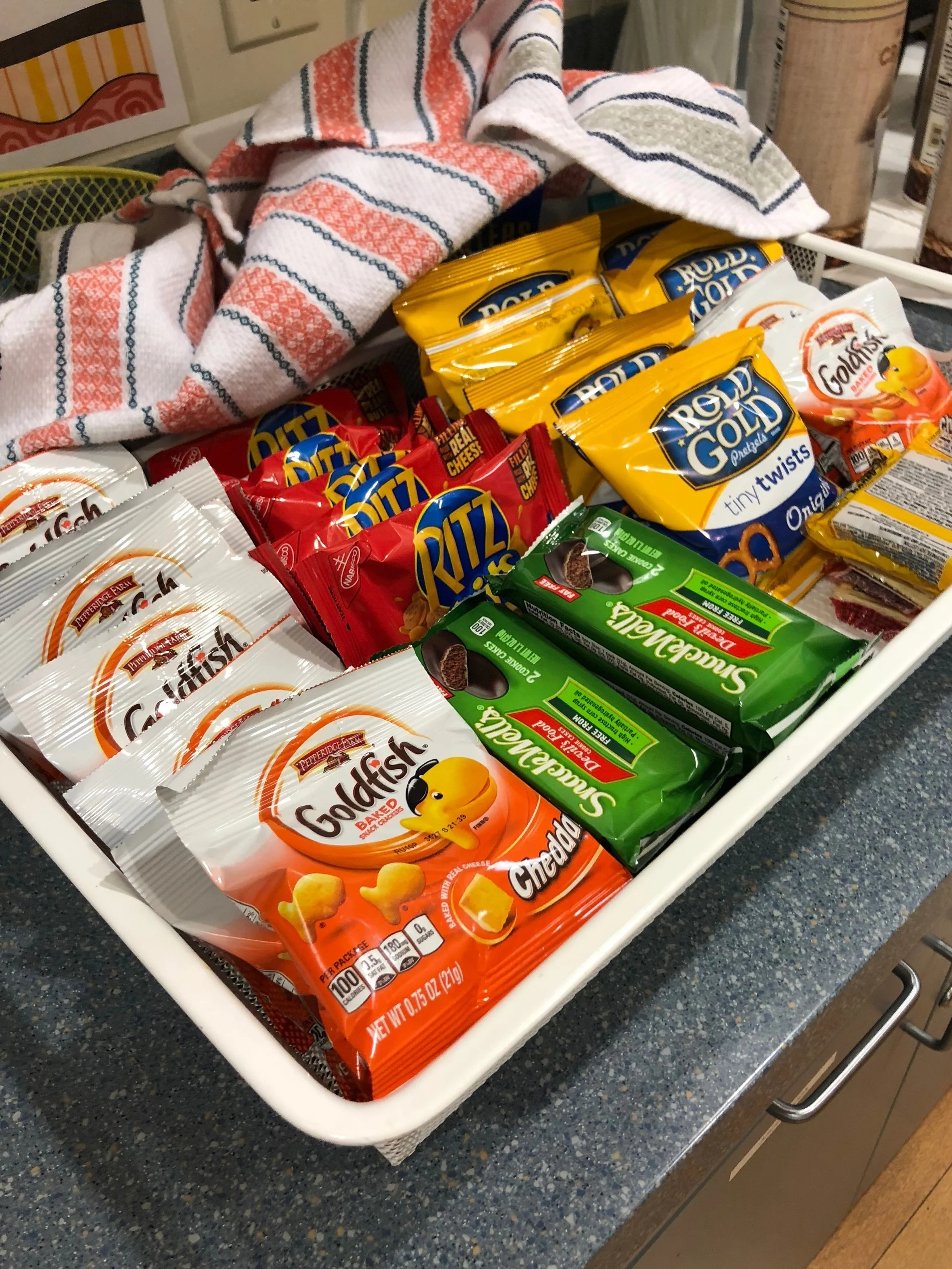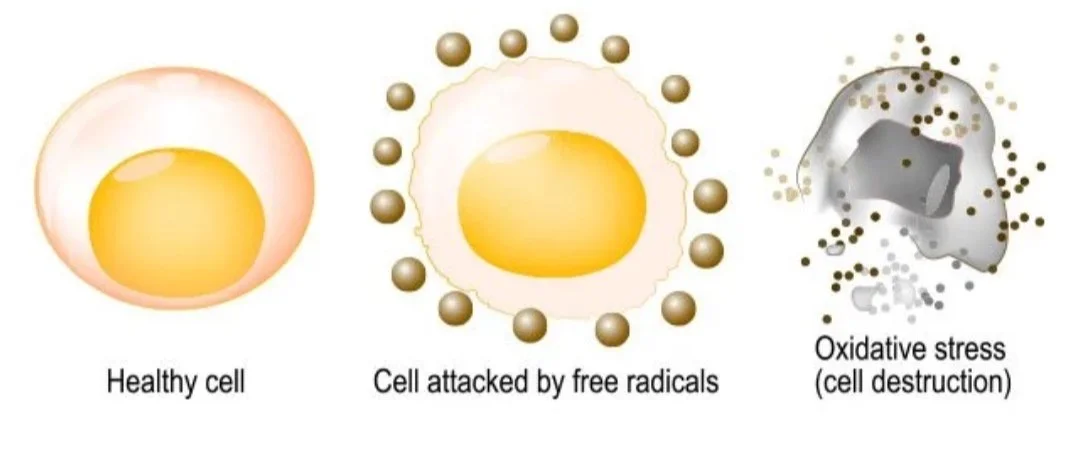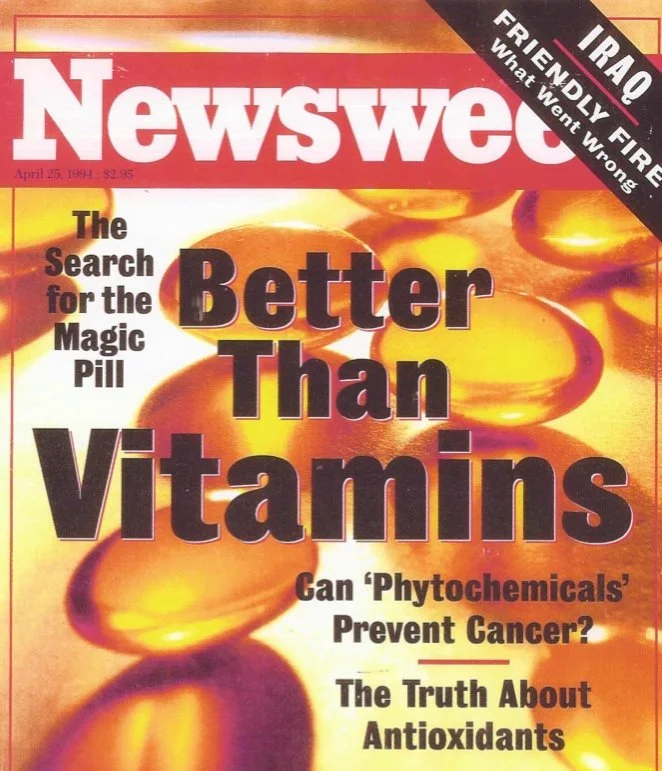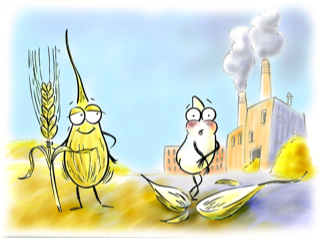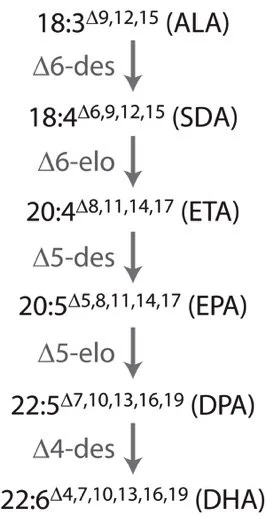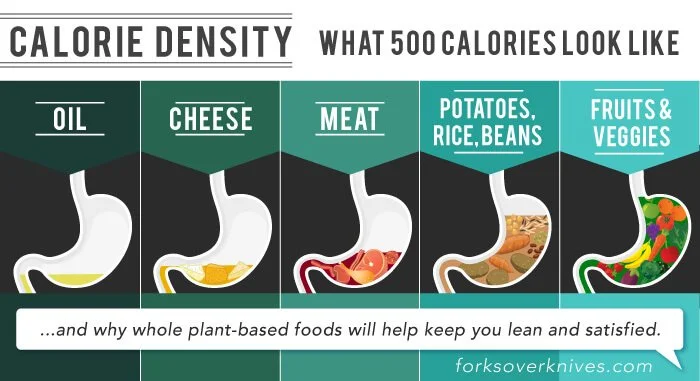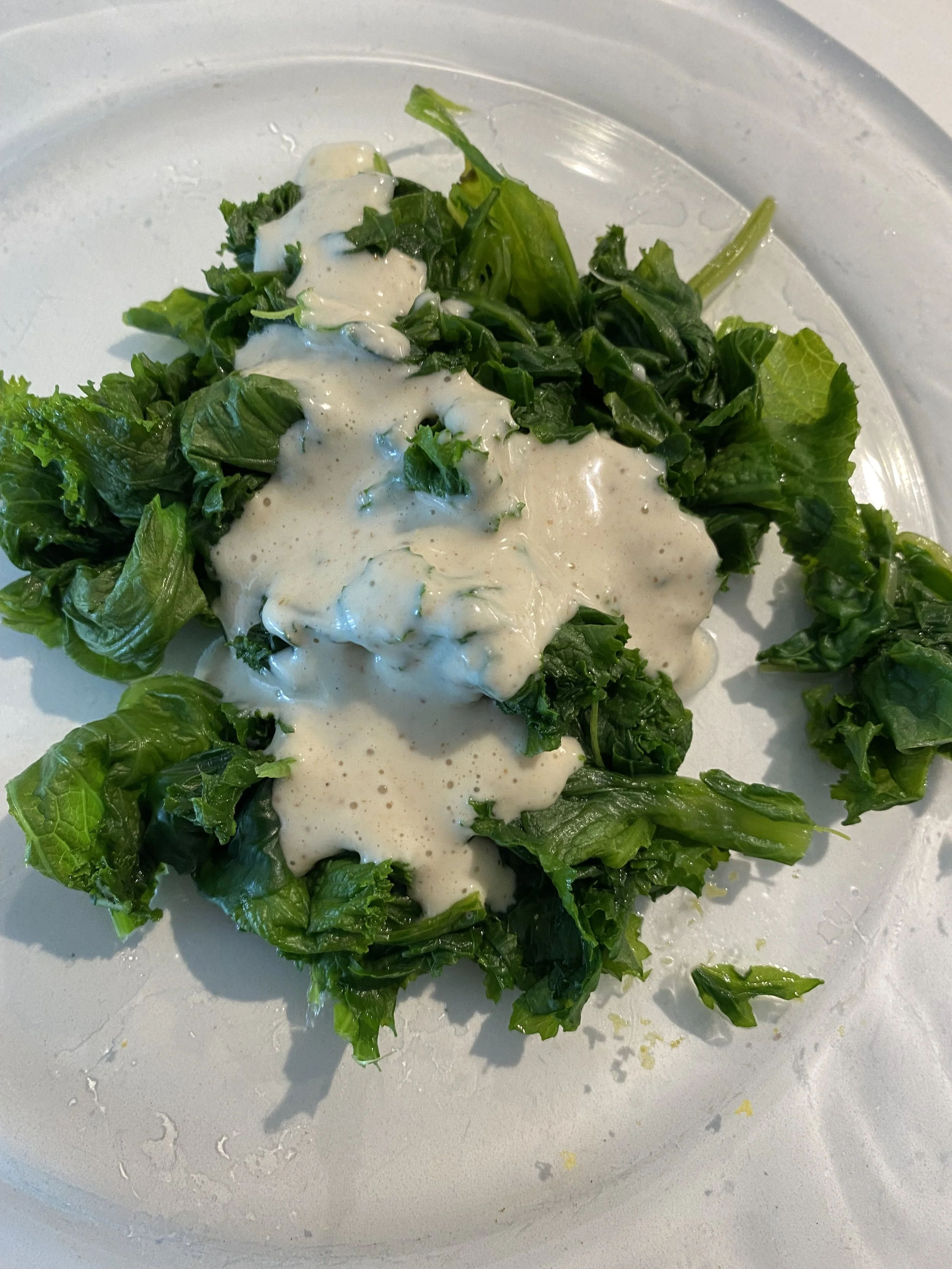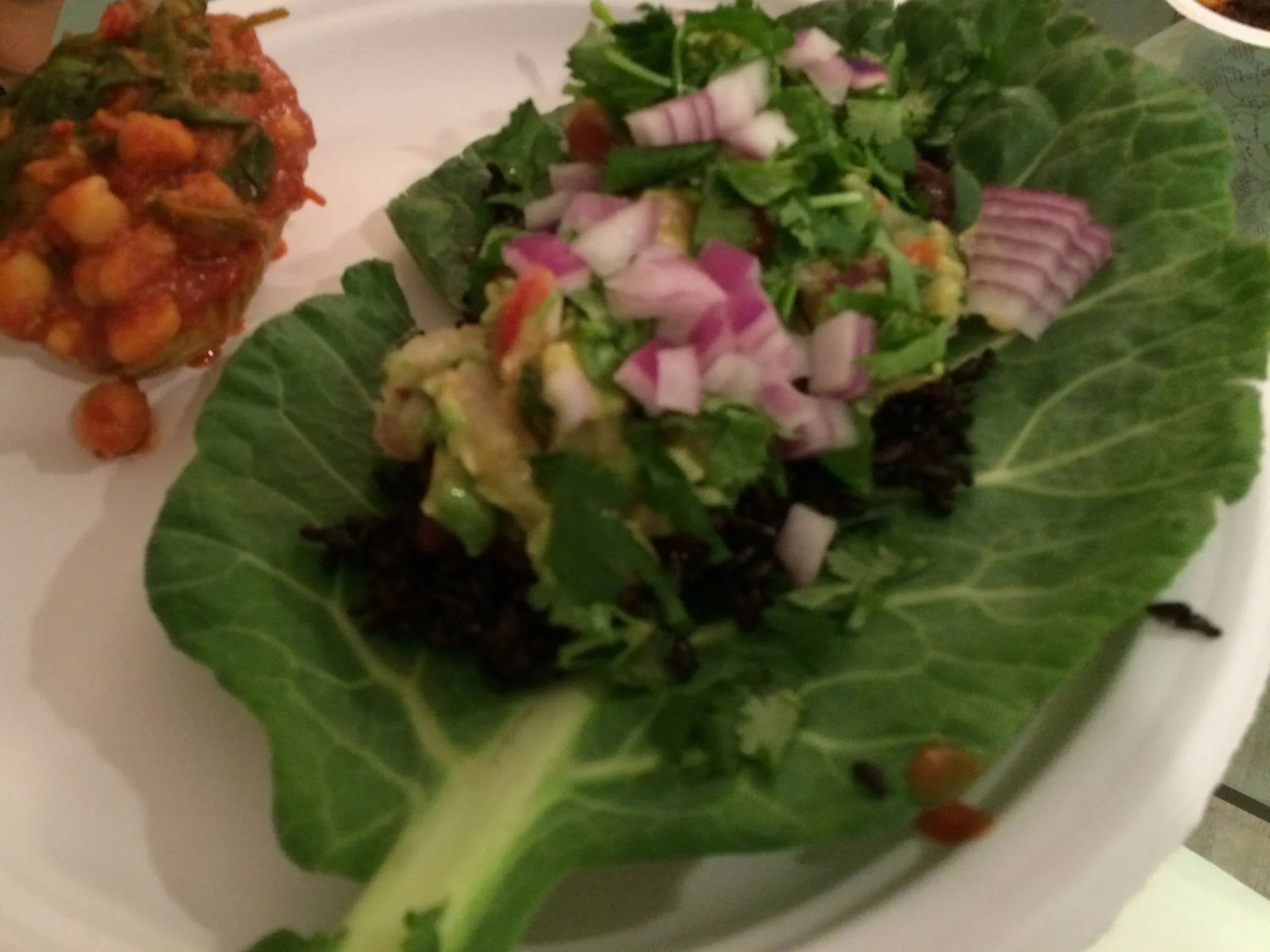
Thrive - Basics
Diet
WHY DIET is IMPORTANT
There is one area you have control over that can make the most profound difference in your health in a short period of time — DIET! 75% of chronic disease can be prevented by paying attention to what we put in our mouths.
Either you already have or you will soon get a variety of dietary recommendations; we received opposing views on diet during our cancer journey. But ultimately, we had to analyze each one and decide what was best for us, based on research and our individual health progress.
In the end, I landed on a WFPB (whole foods, plant-based) diet that is low in fat and high in fiber. This plant-based diet is comprised of 90% (or more) of calories from four major food groups: whole grains, legumes, vegetables, and fruit. A very small amount of calories (10% or less) in the diet can come from organic animal foods, but never dairy products. The most protective diet for anyone with cancer is a WFPB diet that is vegan — in other words, 100% of calories coming from plants. This is a wonderful goal for many reasons that I’ll explain in the My Diet Specifics section below.
A WFPB diet is a great choice for everyone, but especially for people with cancer. Dr. T. Colin Campbell, in his books The China Study and The Future of Nutrition, states that, “Population studies show almost no evidence of casual associations of environmental chemicals with human cancer. However, poor nutrition is not associated with only one type of cancer, but with the vast majority. While mutations do happen, a poor diet (one that is not plant-based) increases their occurrence and reduces our ability to keep those mutations in check.”
Understanding how to eat a healthy WFPB diet is key. There are a lot of people who think they are eating a healthy, plant-based diet, but they are not. I will clearly explain how a vegan WFPB diet is sustainable, if done correctly.
A good way to describe our diet journey is progression. We have taken one step at a time, gradually toward healthier eating. It hasn’t happened all at once, but we are continuing to make progress every day, week, month, and year. What seems daunting right now will seem doable for you down the road!
-
Strong research supports both of these recommendations: eliminate ultra-processed food and flood your body with fruits and vegetables!
-
Oxidative stress causes diseases like cancer. Fruits and vegetables contain antioxidants and phytochemicals that combat oxidative stress.
-
After sorting through a lot of confusion, I landed on a WFPB (whole foods, plant-based) diet.
-
Get specific breakdowns of how I eat - from 0% dairy to 70-80% carbs, as well as tips to remember as you get started on a healthier path to eating.
-
Get detailed information about formulating the composition of your diet:
-
Yes! The kitchen actually treats cancer and other diseases! Get specifics on how I set up my kitchen, key recipes, shopping lists, miracle foods, and more.
Diet confusion
-
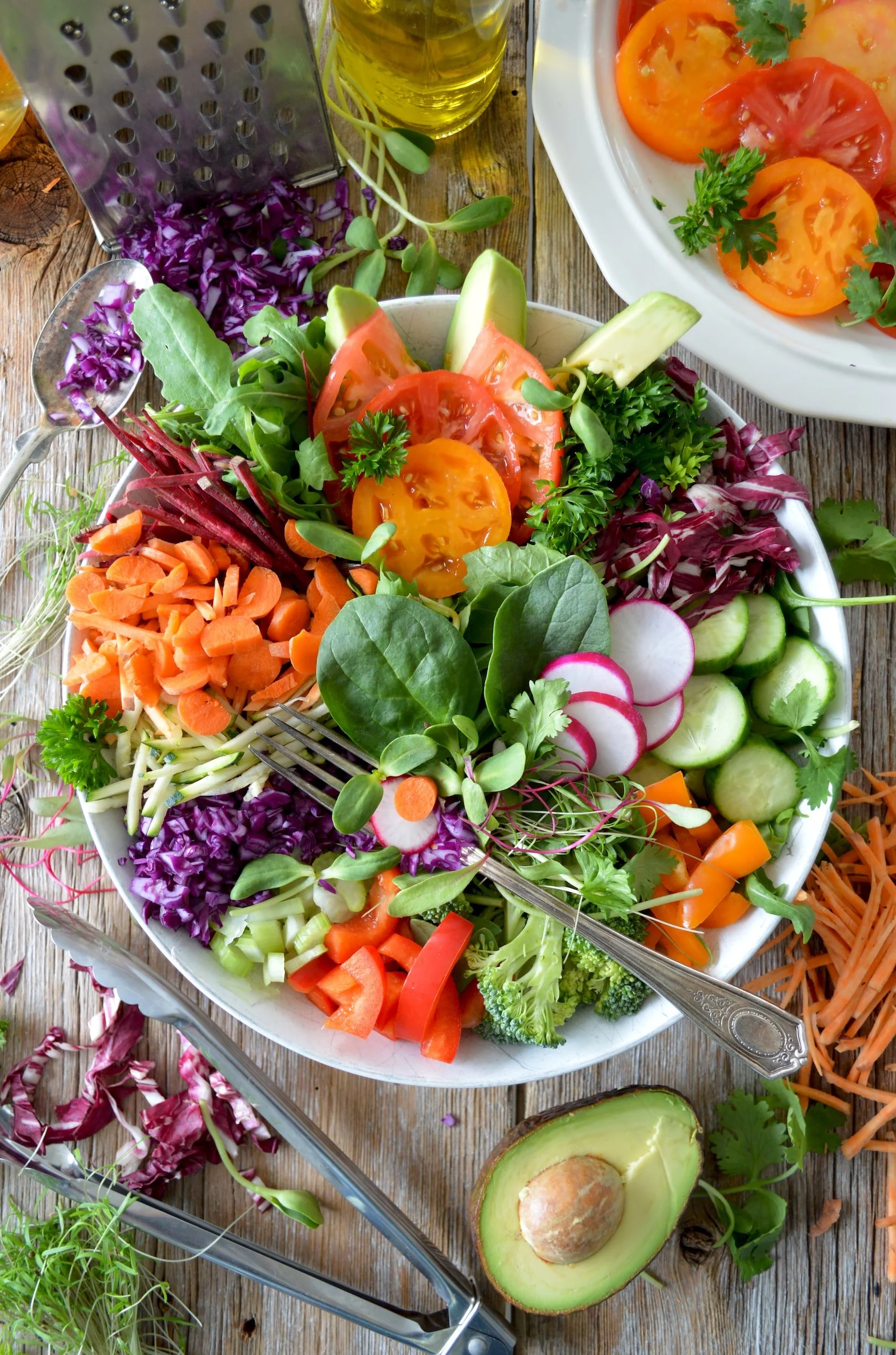
Traditional Chinese medicine physician - "Never eat raw vegetables!"
Naturopath - "Eat a large, raw salad for lunch every day as your meal!"
-

Cancer dietician - "Eat a little whey to ensure that your protein status is optimal."
Nutritionist - "Never eat whey protein, or any other animal protein, if you have cancer."
-

Nurse practitioner - “Eat the keto diet for the rest of your life if you have or had cancer.”
Doctor of osteopathy (D.O.) - “The ketogenic diet is harmful, especially long term.”
-

Oncologist - “Eat the Mediterranean diet.”
Naturopath - “Don’t eat the Mediterranean diet; the research on this diet was funded by olive oil and nut companies.”
Garbage Out, Veggies In!
STEP #1: GARBAGE OUT
Remove ultra-processed foods as soon as possible. They include fast-food and packaged junk foods, and they contain added ingredients such as sugar, salt, fat, and artificial colors or preservatives, like nitrates and BHA (butylated hydroxyanisole). There are numerous studies showing a link between processed food and disease. In one study, a 10% increase of ultra-processed foods in the diet was associated with a significant increase of >10% in risk of ovarian and breast cancer. https://pubmed.ncbi.nlm.nih.gov/29444771/
These foods are loaded with chemicals and were launched in the mid 50s, I was one of the first generations to grow up with these my entire life. My parents and grandparents were not exposed to these foods as children. In several generations of consuming these, I have developed a preference for these foods. Dr. Doug Lisle and Dr. Alan Goldhamer, in their book The Pleasure Trap, aim to show how these foods hijack the brain's pleasure pathways in the same manner as addictive drugs. It is a devastating trap. Some boxed and packaged foods are likely going to be in your kitchen, but choosing them carefully is essential. Watch out for vegan-friendly junk food, too!
Visit EWG.org to learn more.
You know nutrition is a blind spot when you are offered ultra-processed snacks in the chemo room. I took this photo at Joel’s first chemotherapy session.
I was sad and confused when we went to chemotherapy sessions at the hospital. Patients were eating fast food, and even more concerning was the ultra-processed and packaged snacks being served. The reason for the blind spot with food and cancer is that mainstream medicine doesn’t focus on the relationship between nutrition and disease. Unfortunately, in the traditional cancer world there is more emphasis on treatment than prevention. According to a 2015 study, only 27% of U.S. medical schools currently offer the recommended 25 hours of nutrition education; and most of these courses consist of biochemistry, not practical information about diets or food-related decision-making. https://pubmed.ncbi.nlm.nih.gov/25785680/
Oncologists do not take time to analyze the diet and lifestyle of each patient. They tend to prescribe a one-size-fits-all approach to treatment. The treatment recommendation for one patient may not be best for someone with the identical type of cancer. That's why patients have to be proactive about diet and lifestyle.
One of the best ways to do this is to adopt a WFPB diet. There are thousands of studies showing that the more fruits and vegetables that are consumed, the greater the decrease in risk of cancer and other diseases. There are a variety of reasons for this, including less inflammation, healthier immune function, and so much more.
STEP #2 VEGGIES IN
“The news isn’t that fruits and vegetables are good for you. It’s that they are so good for you they could save your life.”
Make a batch of my daily soup every 3-4 days and consume at least 4 cups per day. Visit The Kitchen Treats page for more about my soup recipe and much more.
FLOOD YOUR BODY WITH FRUITS AND VEGETABLES
In 2015, the CDC stated that “Only 1 in 10 adults consume enough fruits and vegetables daily.” Eat at least 10 servings (size of a fist) every day. This is the minimum recommendation; but if you have cancer, eat even more. In 2017, the Imperial College of London did a meta-analysis of all available research in populations worldwide, including up to two million people, and found that 10 servings per day equated to a 13% reduced risk of total cancer and a 31% reduction in dying prematurely. https://www.imperial.ac.uk/news/177778/eating-more-fruits-vegetables-prevent-millions/
A good rule of thumb is to keep your stomach full of vegetables, but eat fruit too! Many cancer patients avoid fruit because of the higher sugar content than what is found in vegetables, but they are missing out on crucial vitamins, minerals, fiber, antioxidants, and other anti-cancer nutrients that are important to good health.
Eat organic when possible, but studies consistently show that the benefits of consuming non-organic plant foods override any risks associated with exposure to herbicides and pesticides. I buy organic whenever possible to avoid harmful contaminants such as glyphosate, etc. Visit EWG.org to learn which fruits and vegetables are grown with the least toxins. Soak non-organic fruits and vegetables in sea salt or baking soda and water for about 15-20 minutes will remove most contaminants.
I have found a lot of ways to flood my body with fruits and vegetables each day: smoothies, salads, soups, snacks, and a whole food supplement called Juice Plus. Learn more about how I eat and how diet can “treat” cancer and other diseases by visiting The Kitchen Treats page. This page offers in-depth details about prepping food, simple solutions to eating well, my favorite recipes, and shopping lists.
Fruits and Veggies Protect
THE PROBLEM: OXIDATIVE STRESS
The reason I need to eat so many fruits and vegetables is because of oxidative stress. Oxidative stress at the cellular level occurs when healthy cells are attacked by free radicals. Free radicals are unstable molecules that are missing an electron. They are produced during metabolic processes and are a byproduct of aging. They are also known as cancer-producing agents. When too many free radicals are produced, they can impair cell regeneration and repair, and lead to the development of cancer over time. https://www.medicinenet.com/what_does_oxidative_stress_mean/article.htm
The bad news is that we are all suffering from oxidative stress every day, whether we like it or not. But we exacerbate oxidative stress by eating an unhealthy diet, engaging in poor lifestyle habits (smoking, stress, etc.), and even flying in an airplane. https://www.sciencedirect.com/topics/engineering/oxidative-damage
THE SOLUTION: ANTIOXIDANT PHYTOCHEMICALS
The good news is that fruits and vegetables contain antioxidant phytochemicals (also referred to as phytonutrients or micronutrients). The Greek word “phyto" means plant. A review published in Molecules explains that “antioxidant phytochemicals can be found in many foods and medicinal plants, and play an important role in the prevention and treatment of chronic diseases caused by oxidative stress. They often possess strong antioxidant and free radical scavenging abilities, as well as anti-inflammatory action, which are also the basis of other bioactivities and health benefits, such as anticancer, anti-aging, and protective action for cardiovascular diseases, diabetes mellitus, obesity and neurodegenerative diseases.” https://www.ncbi.nlm.nih.gov/pmc/articles/PMC6331972/
Scientists are unsure of the total number of antioxidant phytochemicals. I have read estimates of 25,000 to over 130,000, which indicates that scientists are always discovering more and more in whole food. All of these thousands of plant nutrients exist in fruits and vegetables and work in synergy to protect our bodies.
Some examples of antioxidant phytochemicals are: anthocyanins in berries; bioflavanoids in citrus and whole grains; carotenoids in carrots; ellagic acid in berries and walnuts; sulforaphane in broccoli sprouts and cruciferous vegetables. This is why it is so important to eat the "rainbow." https://www.ncbi.nlm.nih.gov/pmc/articles/PMC9135406/
People who eat a WFPB diet have 50-60 times more antioxidant phytochemicals available to protect the cells from free radicals. There are thousands of studies confirming the relationship between fruits and vegetables and oxidative stress.
(Image from MedicineNet)
When a cut apple turns brown, it has undergone oxidative stress. Lemon juice contains antioxidant phytochemicals and slows down the aging process.
In 1994, Newsweek published an article bringing plant nutrients to the forefront.
PLANT FOODS TO THE RESCUE
In 1999, I really came to understand the power of plant foods. I knew fruits and vegetables were important, but I didn't understand oxidative stress and antioxidant phytochemicals. It is crucial for a cancer patient to gain this knowledge because it will increase the motivation to eat plenty of plants! There is no doubt that whole plant foods have compounds that prohibit, block, and suppress cancer. I often think about what would have happened if I had never changed our diet over 20 years before cancer.
I have often cited a 2005 article from USA Today when encouraging young parents to feed their children fruits and vegetables. It is entitled, Plant Foods To The Rescue, and this statement was so powerful for me to read as a young mom: “A growing body of research shows that, once inside the body, fruits and vegetables spring into the role of superheroes, fighting cancer and other diseases in at least eight simultaneous ways. And, like the Superfriends, they seem to work better as a team. Some phytochemicals, or plant chemicals, knock out carcinogens and fight inflammation. Some regulate how quickly cells reproduce and spur old, damaged cells to self-destruct. Other plant chemicals perform ‘routine maintenance’ on DNA.” Because of this article, I actually taught my own children that there are superheroes in whole foods. :)
I have such confidence knowing that the whole foods I’m eating each day are going to battle on my behalf inside my body.
“A growing body of research shows that, once inside the body, fruits and vegetables spring into the role of superheroes, fighting cancer and other diseases in at least eight simultaneous ways.”
THE TRUTH ABOUT SUPPLEMENTS
An apple alone contains more than 10,000 antioxidant phytochemicals, but we have to eat the whole apple in order to get the benefit. If a handful of antioxidant phytochemicals are extracted from the apple and put in a vitamin pill, synergy is not achieved and our bodies are not protected.
According to the Linus Pauling Institute, “Eating a diet high in fruits, vegetables, grains, legumes, and plant-based beverages has long-term health benefits, but there is no evidence that taking dietary supplements of non-nutrient phytochemicals extracted from plants similarly benefits health.” Unfortunately, about 70% of Americans are trying to fill the gaps in their diets with a multivitamin. https://lpi.oregonstate.edu/mic/dietary-factors/phytochemicals
Isolated nutrients in supplement form are ineffective at protecting our bodies. Spinach, kale, and collard greens all contain calcium, but they also contain thousands of other antioxidant phytochemicals that must be present in order for the calcium to be absorbed and utilized by the body. However, calcium supplements do not do the same thing. In fact, they may do more harm than good. Look at these two studies showing that consuming calcium supplements can increase the risk of colon polyps, and also a cardiovascular event. https://pubmed.ncbi.nlm.nih.gov/15199111/ https://pubmed.ncbi.nlm.nih.gov/28466573/
This is from the Moss Report, "Kale is like a vegetable vitamin pill: each 4 oz. portion contains 20% or more of the Daily Value of vitamin A, vitamin C, vitamin K, vitamin B6, folate and manganese. Kale is also a good source of thiamin, riboflavin, pantothenic acid, vitamin E and several dietary minerals, including calcium, potassium, and phosphorus. In addition, it contains compounds that contribute to the formation of sulforaphane."
-

In the Bible, Daniel and his friends opted to consume vegetables and water for ten days, instead of the king's food and wine. "And in every matter of wisdom and understanding, he found them ten times better than all the magicians in his kingdom." Daniel 1:20
-
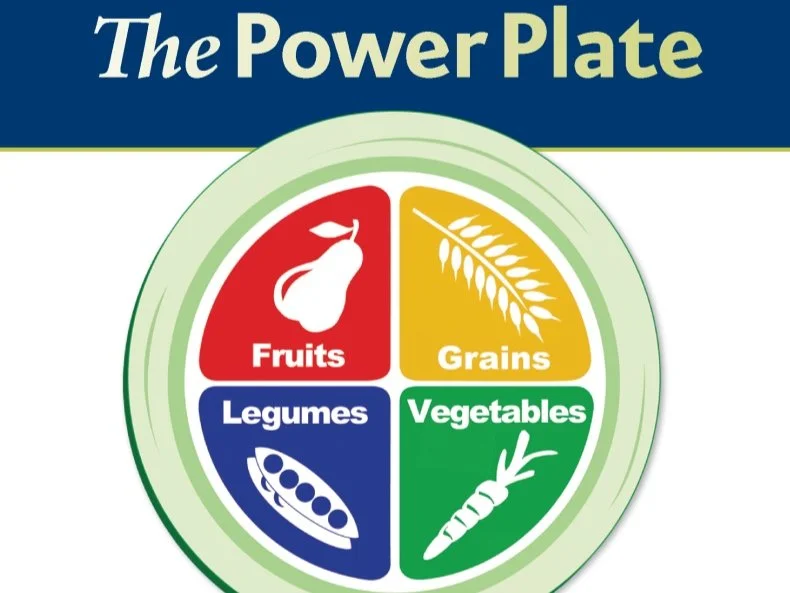
In 1991, PCRM (Physicians Committee for Responsible Medicine) unveiled four new food groups, a healthful alternative to the USDA’s food pyramid. Lawsuits followed in an effort to change guidelines. Learn more at pcrm.org.
-
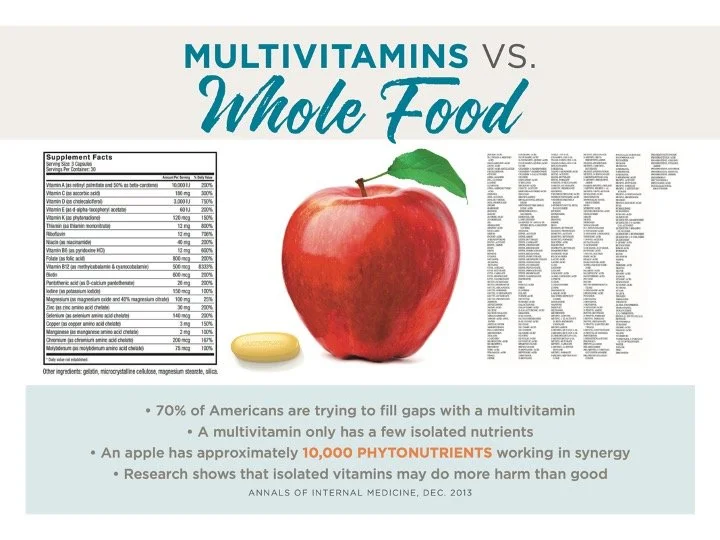
Our bodies are designed to utilize the thousands of nutrients that come from whole foods, not the megadoses of isolated, fragmented, vitamins from a synthetic vitamin pill. There is not a one-size-fits-all supplement regimen.
My Diet
Cancer can be a huge wake-up call to evaluate everything in one’s life. One of the glaring red flags for many people is diet. Some people immediately commit to a WFPB (whole foods, plant-based) diet and to eat it consistently. I was a bit confused after my diagnosis, because I was already eating healthily. It caused me to question my diet, until I realized that stress, lack of sleep, and a cancer gene may have been culprits. My pristine diet was probably keeping me alive. Read “I Already Ate Healthy!” for more details.
Even though my diet is “root”ed in plants, there is so much more to understanding what a healthy, plant-based diet entails. The healthiest version of WFPB diet is one that is free of dairy, refined sugar, alcohol, and other toxic foods.
Numerous studies show that people who eat a low-fat, plant-based diet have stronger immunity, 50% less inflammation, and live a long time! There are five blue zones that eat this diet and are home to the most centenarians on the planet: Loma Linda, California; Nicoya, Costa Rica; Sardinia, Italy; Ikaria, Greece; and Okinawa, Japan. https://www.ncbi.nlm.nih.gov/pmc/articles/PMC6125071/
This diet is not only protective, but can actually stop the progression of (and even reverse) diseases like cancer. https://www.ncbi.nlm.nih.gov/pmc/articles/PMC3251953/
Breast cancer - https://pubmed.ncbi.nlm.nih.gov/24606431/
Colon cancer - https://pubmed.ncbi.nlm.nih.gov/17699009/
Prostate cancer - https://pubmed.ncbi.nlm.nih.gov/25533015/
Melanoma - https://pubmed.ncbi.nlm.nih.gov/25194935/
Conversely, people who eat a high-fat, high-protein diet (especially a diet high in animal foods) have higher rates of disease and shorter life spans. https://pubmed.ncbi.nlm.nih.gov/25548184/ https://pubmed.ncbi.nlm.nih.gov/24606898/ https://pubmed.ncbi.nlm.nih.gov/19746296/ https://pubmed.ncbi.nlm.nih.gov/21590739/
I learned about the benefits of a WFPB diet — but also how to properly eat this diet for cancer — directly from leading authorities on plant-based nutrition such as Dr. John McDougall, T. Colin Campbell, Dr. Caldwell B. Esselstyn, Dr. Neal Barnard, and especially Dr. Pam Popper.
food choices pyramid
To get an overview of how we eat, review Dr. Pam Popper’s Food Choices Pyramid (image) from top to bottom as you review the written points below. Dr. Popper is the Executive Director of Wellness Forum Health. She is the author of Food Over Medicine: The Conversation That Could Save Your Life.
Then, if you want a deeper dive into each section, visit The Kitchen Treats page.
FAT
Eat some healthy, high-fat plant foods such as avocados, nuts, and seeds as condiments, but try not to make them the main ingredient in a meal. An example would be avocado on toast or nuts on top of a salad.
Try to avoid using concentrated oils (this includes any and all oils.) These are pure liquid fat and are extremely high in calories. This is where many plant-based eaters go wrong — they consume way too much fat from salad dressings, potato chips, tortilla chips, french fries, or other foods with fat added to them.
If I do consume a little oil, it is olive oil. A meta-analysis of 45 studies shows some benefit for cancer. https://pubmed.ncbi.nlm.nih.gov/35015763/
Although we need fat in our diets, most people consume way too much. Animal foods, and some plant foods such as peanut butter, can create an overabundance of fat in the diet.
MINIMALLY-PROCESSED FOODS
Minimally-processed foods, such as bread and pasta, are fine to incorporate but should be a lesser constituent of your diet, since these are higher in calories and fat and lower in nutrients. These should not be part of every meal.
Examples: two slices of sprouted bread (like Ezekiel brand) or pasta (like brown rice or chickpea).
Stay away from ultra-processed foods, but also highly processed foods, like donuts and cookies. Watch out for vegan-friendly junk food, too!
FRUITS AND VEGETABLES
FRUITS
Add fresh fruit to smoothies or have as a snack.
Be careful not to consume too much dried fruit.
VEGETABLES
Add fresh vegetables to salads and soups.
Eat raw and steamed vegetables at meals and as a snack.
A good rule to follow is to keep your stomach full of vegetables.
STARCHES
The bulk of your diet should consist of starchy foods like whole grains, legumes, and starchy vegetables such as potatoes (white and sweet), yams, winter squash (acorn and butternut), corn, carrots, parsnips, and turnips.
These are the more calorie-dense, high-fiber, filling foods, which is why it's important to eat enough of them to make this diet sustainable.
These should form the base of your meals.
A WFPB diet only works if you eat enough starchy foods.
It is so important to understand this part of the pyramid, including the difference between starchy (potatoes and squash) and non-starchy (broccoli, cauliflower, and kale) vegetables.
It is also crucial to grasp that carbs are not bad, like we have been led to believe, and that we can get plenty of protein from plants.
WATER
Drink at least 64 ounces of filtered water each day.
Visit the Hydration page to learn more.
TIMING OF MEALS
Eating smaller, more consistent meals several times each day is a great way to be sure you consume enough calories and stay ahead of hunger. Research shows that eating more frequent meals, like four to six mini meals, results in increased metabolic rate (calories burned), along with favorable changes in body composition. If we don’t eat enough, blood glucose levels drop and amino acids are released from our lean muscle mass and converted to glucose, so our lean muscle mass is compromised. https://www.nejm.org/doi/full/10.1056/NEJM198910053211403 https://pubmed.ncbi.nlm.nih.gov/15085170/
Breakfast is important! Skipping breakfast is associated with an increased risk of type 2 diabetes and cardiovascular complications. https://pubmed.ncbi.nlm.nih.gov/30418612/ https://pubmed.ncbi.nlm.nih.gov/26732562/
I try to finish eating each day by 7:00 PM. I have noticed that a couple of hours to rest and digest has been best for me.
Here is a typical day of my eating plan:
7:00 AM - Breakfast smoothie made with a variety of nutrient-dense foods including sprouts. Visit The Kitchen Treats page for the recipe.
9:30 AM - Sprouted dry cereal with raisins, almond milk, and topped with spices (cinnamon, ginger, nutmeg, and cloves).
1:30 PM - Salad with a lot of sprouts, vegetables, etc., and topped with an oil-free dressing like rice vinegar; and oil-free hummus with crackers.
3:30 PM - Bowl of soup containing starchy and non-starchy vegetables.
6:00 PM - Brown rice and steamed vegetables.
6:30 PM - Bowl of fresh berries.
My Diet Specifics
MY DIET COMPOSITION
0% ALCOHOL
You don’t have to look too far to find the research on the direct connection between alcohol and cancer. https://www.cancer.gov/about-cancer/causes-prevention/risk/alcohol/alcohol-fact-sheet
All alcoholic drinks, including red and white wine, beer, and liquor are linked with cancer. https://www.cdc.gov/cancer/alcohol/index.htm
0% DAIRY
Choose plant milks over dairy when making smoothies, having cereal, making mashed potatoes, etc.
Those who consume less dairy have a significantly lower risk of developing lung, breast, and ovarian cancer than those who consume more. https://pubmed.ncbi.nlm.nih.gov/25314053/
Dairy is a cancer-promoting food and it increases IGF-1 level, which is a known cancer risk factor. https://pubmed.ncbi.nlm.nih.gov/19746296/
Cow’s milk contains both estrogen and estrogen metabolites. Consuming cow’s milk products results in higher circulating estrogen levels. https://pubmed.ncbi.nlm.nih.gov/19496976/
"Research on dairy confirms it causes disease and inflammation and it doesn't help to build strong bones." Fiber Fueled, Dr. Will Bulsiewicz
0% FRIED FOODS
Eliminate fried foods. Seek alternatives, like using an air fryer.
Research shows there is a connection between fried foods and colon cancer. https://pubmed.ncbi.nlm.nih.gov/3189276/
0% GENETICALLY MODIFIED FOODS (GMOs)
Eliminate genetically modified foods and produce that is high in pesticides. Visit EWG.org to learn more.
When choosing produce, buy organic as often as possible.
Some studies show that organic plant foods have higher concentrations of antioxidants than non-organic plant foods.
Studies show that nutrient density is important for cancer patients; therefore, if affordable and accessible, consuming organic plant foods may be helpful for cancer patients.
Many studies show that eating organic plant foods reduces exposure to chemicals; but there are no studies demonstrating that consuming non-organic plant foods increases the risk of cancer, or that eating organic plant foods improves outcomes for cancer patients.
0% ULTRA-PROCESSED FOODS
There will likely be some minimally processed foods in your diet, but choose packaged foods that contain more plant ingredients and higher fiber.
We eliminated processed sugar, but we consume a small amount of Atlantic sea salt. Here are 2 options: 1 or 2. Another option is non-iodized salt.
Instead of using salt all the time, use garlic, basil, oregano, and other spices. Even celery and Swiss chard can add salty flavor to your dishes.
Get used to buying "low or no sodium."
10% FAT
Limiting dietary fat to 10% is recommended for someone with cancer. It could be as high as 15% for someone without disease.
I get my fat from whole plant sources as much as possible, but I limit consumption of some plant foods, like avocados and nuts, because they are higher in fat.
Eliminate or drastically reduce consuming or cooking with oils. Concentrated oils increase inflammation and harm the body.
Try steaming vegetables or sautéing in water, vegetable broth, or onions and garlic.
Marinate foods with fresh lemon, orange, balsamic vinegar, or tomato and other vegetable juices.
Make oil-free salad dressings by blending cashews, vinegar, fresh lemon, etc.
I still use a little coconut and olive oil here and there, but we are much more focused on “less is more.”
10% PROTEIN
Plant-based diets get criticized for not being able to provide enough protein; but if you look closely at these claims, they are not true. If you are eating a plant-based diet, you should be getting plenty of essential amino acids. https://www.ncbi.nlm.nih.gov/pmc/articles/PMC6893534/
In The Starch Solution, Dr. McDougall says, “You don’t need to eat foods from animals to have enough protein in your diet. Plant protein alone can provide enough of the essential and non-essential amino acids as long as sources of dietary protein are varied and caloric intake is high enough to meet energy needs. Whole grains, legumes, vegetables, seeds, and nuts all contain both essential and non-essential amino acids.”
There is one well-researched reason cancer patients should get their protein from plant sources and lower their overall intake, and that is because of IGF-1 (Insulin-like growth factor 1). IGF-1 is a hormone that increases the risk of many forms of cancer. A lower level of IGF-1 is associated with longer survival for cancer patients. https://www.ncbi.nlm.nih.gov/pmc/articles/PMC3988204/
Many cancer patients avoid animal products for the rest of their lives, while others move toward a vegan diet for the first 90 days to detox their bodies, and then slowly add them back. As I stated above, dairy should be eliminated from the diet. If you choose to include meat, fish, or eggs in your diet, limit consumption to 2-3 times per week.
Make sure that any meats purchased are labeled “certified organic.” This means you will be avoiding meat that is given steroids, hormones, or antibiotics.
Also, avoid processed meats (bologna, bacon, hot dogs, and ham) and fish that is high in heavy metals or contaminants, etc.
If you are eating fish, choose wild salmon or other wild-caught fish and avoid farm-raised fish.
Humans are designed to eat a diet with about 90% of calories from plants and about 10% or less coming from animal foods.
Unfortunately, today’s average American eats 15% of calories from meat.
70-80% CARBOHYDRATES
Carbs are the main energy source in a WFPB diet (whole grains, legumes, vegetables, and fruit).
It is important to understand the difference between starchy and non-starchy, as well as complex carbs and simple carbs.
Cancer risk was reduced when daily intake of dietary fiber was between 25 grams and 29 grams. https://www.thelancet.com/journals/lancet/article/PIIS0140-6736(18)31809-9/fulltext
A WFPB diet is naturally high in fiber because of the amount of plants it contains. It should be simple to get at least 45 grams of fiber each day.
MY DIET TIPS
Enjoy your meals.
Chew your food to a cream. Eat slowly and enjoy your meals. I have had to work really hard to slow down while eating and learn to enjoy my food. Rest and digest after eating.
Don’t stress about food!
Stress is never good, even with food, so give yourself grace as you adjust to eating more plants. The most important thing you can do — add more plants! If you give your taste buds long enough, they will get on board.
Eat as close to the plant as possible.
The majority of your diet should be whole, plant foods. When choosing boxed and packaged foods, look for a short ingredient list. Be aware that it’s easy to veer off toward sweets and oils, and allow those to creep their way back in and take over.
You don’t have to eat things you don’t like.
Variety is important, but there are populations of people who have limited dietary resources, and they survive and thrive on very few plant foods. You can eat the same things over and over and still remain healthy. If you don't like kimchi, then don't eat it, but realize that as your taste buds change, you will be more open to new foods.
It is possible to eat out in a healthy way.
You will most likely find yourself eating at home a lot, but when you travel, go out, or need to attend a party or family gathering, there is a way to still eat healthy. Don’t waiver from your commitment, even if friends and family don’t understand your choices. Your job is to take care of your health, not to make sure they are okay with your lifestyle habits. Read “Eating Out Healthy” for my recommendations when on the go.
CARBS 70-80%
An optimal diet should be comprised of 70-80% carbohydrates. The word carbohydrate comes from the three elements they are made of: carbon, oxygen, and hydrogen (carb-o-hydrate). Understanding carbohydrates is so important for everyone, but especially for cancer patients because eating good carbs is the key to a healthy, plant-based diet that is sustainable.
Dr. John McDougall, MD in his book, The Starch Solution, explains that it is important to make the bulk of your diet fruits and vegetables. It is impossible to consume enough fruits and vegetables to sustain your body, unless you’re getting enough starchy plant foods. These foods are high in fiber and densely nutritious.
Common starchy plant foods include:
Grains: barley, buckwheat, farro, millet, oats, quinoa, rice (brown, red, wild, etc.), rye, sorghum, and wheat.
Beans or legumes: beans (black, pinto, etc.), chickpeas, lentils, peas, pumpkin seeds, and walnuts.
Starchy vegetables: carrots, corn, Jerusalem artichokes, parsnips, plantains, potatoes, salsify, winter squashes (acorn, banana, butternut, Hubbard), and yams.
Non-starchy plant foods are extremely important, but alone they cannot provide enough calories to sustain a WFPB diet. They won’t keep you satiated on their own.
Common non-starchy plant foods include:
Vegetables: bok choy, broccoli, Brussels sprouts, cabbage, cauliflower, celery, chives, collard greens, eggplant, garlic, green beans, kale, leeks, lettuce, mustard greens, okra, onions, pepper, radishes, rhubarb, scallions, spinach, summer squashes, turnips, and zucchini.
Fruits: apples, apricots, bananas berries, cherries, figs, grapefruit, grapes, loquats, mangoes, melons, nectarines, oranges, papayes, peaches, persimmons, pineapples, plums, tangerines, and watermelons.
As a society, we have been convinced that starch makes people fat, but this is false. Dr. McDougall dispels the myth that starches cause weight gain. Starches (from plant foods) do not turn to sugar, which turn to fat, making you gain weight. If this were true, there would be an epidemic of obesity among other countries who eat copious amounts of starches in their diets. Asians live on rice-based diets; rural Mexicans eat corn, beans, and squash; central Papua New Guineans are nourished primarily by sweet potatoes; and rural Africans thrive on starchy staples such as yams, cassava, millet, and beans. Not only do these populations not have obesity issues, but they have low rates of other diseases, including cancer. Interestingly, when these populations move to the U.S., they adopt our standard American diet and subsequently experience obesity. Processed starchy foods and starchy foods containing added fat do cause weight gain — for example, potatoes that are fried in oil or topped with butter and sour cream.
Eating a diet rich in starchy foods creates satiety. It is important to eat both starchy and non-starchy carbohydrates. Understanding how to choose the right carbs is key!
Diet Composition: Carbohydrates and Fiber
The plant vs. THE PLANT
When it comes to eating well, the plant matters. Manufacturing plants have made carbs a dirty word! They have taken nourishing plant foods (like whole grains) and stripped them of their fiber, over-processing them into something unrecognizable to the body. A bulk of the American diet contains these refined plants that are slowly destroying our health.
Simple carbohydrates is a term that describes these manufactured plants because they contain little to no fiber and are made from short, simple molecules. On the other hand, complex carbohydrates come from whole plant foods, and they have naturally occurring long, complex molecule chains, making them high in fiber and low in fat. Complex carbs should be the main staple in a healthy plant-based diet. Choosing whole grains over refined grains may be association with cancer recurrence and mortality. https://pubmed.ncbi.nlm.nih.gov/29877501/
SIMPLE CARBS
Are prominent in the American diet due to the overconsumption of cakes, candy, cookies, pastries, juice, soda, white rice, white bread, and white pasta.
Enter the blood stream very quickly causing an immediate spike in blood sugar, then an energy crash soon after, causing disorders and diseases such as diabetes, heart disease, and cancer.
Sugar suppresses the immune system, and building immunity is the key to overcoming cancer.
COMPLEX CARBS
Are the main constituent of plants — in the roots, stems, leaves, flowers, and fruits.
Enter the blood stream slowly because the sugar is accompanied by adequate fiber. This takes more work for the body to digest, resulting in the food having a less dramatic impact on your body’s blood sugar. This gives you sustained energy over a longer period of time.
Examples include: fresh, whole fruits and vegetables, beans, nuts, seeds, and whole grains, like brown rice.
Whole grains are an example of a good carb. Many Americans are eating gluten free, which some have misunderstood to mean grain free. Gastroenterologist Dr. Will Bulsiewicz in his book, Fiber Fueled, emphasizes that the only people who need to avoid whole grains are those with celiac disease. Whole grains are loaded with fiber as well as vitamins, minerals, and antioxidants which help to promote a healthy gut microbiota. Visit the Gut Health page to learn more.
When selecting boxed and packaged foods, choose minimally processed options of cereals, breads, and pasta. According to Michael Greger, MD, you should use the 5-to-1 Fiber Rule to choose better packaged foods.
Calculation: Take the grams of carbohydrates and divide by the grams of fiber. If the answer is close to 5, that food contains more fiber and is better for your blood sugar. For example, if a package contains 25 grams of total carbohydrates and 5 grams of fiber, then the answer is 5, and that product is more complex. Ezekiel sprouted grain bread makes the cut: 15 divided by 3 equals 5. https://nutritionfacts.org/2018/05/08/follow-the-5-to-1-rule-for-packaged-foods/
FIBER 25-45 grams
Fiber is the blindspot for most people when it comes to thinking that carbs are bad. The difference between simple and complex is the amount of fiber, which determines whether the carb is unhealthy or healthy. Fiber is a good carbohydrate found in fruits, vegetables, whole grains, and legumes.
People often look at a food label and decide that a packaged food is bad because it contains 20 grams of carbohydrates. But they fail to look at the subcategory of fiber. If the grams of fiber are 5 after using the calculation above, then the food is complex. Yet if there is only 1 gram of fiber in the food, it is simple.
On a food label, fiber is broken down into soluble and insoluble — two types of fiber in plants. The sound of the words reminds me of the difference: “soluble” fiber “sops” up cholesterol, while “insoluble” scrubs the “intestines.”
SOLUBLE AND INSOLUBLE fiber
Soluble fiber is found in fruits, vegetables, legumes, barley, oats, oat cereals, and oat bran. (An example is the white of the apple.)
Insoluble fiber is found in whole grains like rice, whole wheat, wheat bran, millet, corn meal, and buckwheat. (An example is the skin of the apple.)
EATING ENOUGH FIBER
If you’re looking for fiber in other foods besides plants, you’re looking in the wrong place. Animal products, such as meat and dairy products, do not contain any fiber. Plants are where you find fiber. In spite of the amazing benefits of a high fiber diet, 97% of Americans are not getting enough fiber, because they’re not eating enough plants. The average American adult eats 10-15 grams of fiber, whereas the Recommended Daily Allowance (RDA) established by the federal government is at least 25 grams per day. Most nutritionists recommend 35 grams per day. However, in countries where cancer rates are lowest, they consume more than 45 grams per day.
High-fiber, plant-based diets result in reduced risk of cancer, better response to cancer treatments, less inflammation, and a feeling of fullness with fewer calories consumed — resulting in optimal weight maintenance. For instance, eating 40 grams of fiber daily, an average person would feel full at 1,620 calories.
Below is a list of research articles that support increasing fiber in the diet in order to decrease cancer risk, recurrence, and even promote a better response to cancer treatment:
Cancer risk was reduced when daily intake of dietary fiber was between 25 grams and 29 grams. https://www.thelancet.com/journals/lancet/article/PIIS0140-6736(18)31809-9/fulltext
A high-fiber diet reduces the risk of colon cancer, as shown in these studies: https://pubmed.ncbi.nlm.nih.gov/10089109/ https://pubmed.ncbi.nlm.nih.gov/1334153/ https://pubmed.ncbi.nlm.nih.gov/29098294/
Every 10-gram increase in soluble fiber consumption was associated with a 26% decrease in the risk of developing breast cancer. The greatest risk reduction occurred when fiber intake was higher than 25 grams per day. The researchers also suggested that adequate fiber intake can reduce risk of overweight/obesity, another risk factor for cancer. https://pubmed.ncbi.nlm.nih.gov/22234738/
Women who eat a diet with inadequate fiber are at risk of having estrogen reabsorbed in the intestinal tract, rather than excreting the excess estrogen in their feces. If the gut is unhealthy, it floods the body with too much estrogen. This contributes to higher blood levels of estrogen, which is also a risk factor for breast cancer. Women are supposed to break down excess estrogen each day and excrete it in bowel movements; they can achieve this with a low-fat, high-fiber, plant-based diet. https://pubmed.ncbi.nlm.nih.gov/3628202/
A high fiber diet reduces inflammation by interacting with gut bacteria. https://pubmed.ncbi.nlm.nih.gov/23319119/
People who reported higher fiber intake (which promotes healthy gut microbes) had better responses to treatment overall. After adjusting for other factors, the researchers found that every five-gram increase in daily fiber intake corresponded to a 30% lower risk of cancer progression or death. https://pubmed.ncbi.nlm.nih.gov/34941392/
Getting at least 25 grams of fiber is easily achievable on a plant-based diet when a bulk of your diet is coming from starchy vegetables (potatoes, squash, corn, and whole grains). These foods are high in fiber, promote healthy digestion, and provide satiety. You will probably consume more like 50 grams per day when you eat a WFPB diet, as described above.
Acceptable Sweeteners
I use Medjool dates as a sweetener in many recipes. Here are some plant-based sweeteners that I have learned are the most acceptable for cancer patients. I always look for organic versions of these.
BLACKSTRAP MOLASSES
Blackstrap molasses is what is left over from the sugar-refining process. It is full of concentrated vitamins and minerals that were once in the cane sugar, and it is a good, natural source of calcium, iron, potassium, and vitamin B6.
HONEY
Purchase honey that is100% raw and local.
MAPLE SYRUP
Purchase maple syrup that is 100% pure. (The darker the color, the more antioxidants it contains.)
MONK FRUIT
Monk fruit comes from a small green melon, native to southern China.
STEVIA
Stevia comes from a small shrub native to Paraguay and has been used for over 1,500 years as a non-caloric sweetener in drinks, cereals, oatmeal, and smoothies. Stevia is non-toxic and nutrient-rich; it contains calcium, phosphorus, sodium, magnesium, zinc, vitamins A and C, and over 100 phytonutrients. A word of caution — some stevia products contain added ingredients, so be sure to purchase pure stevia. There are also some unhealthy products on the market being touted as healthy just because they contain stevia . . . so beware!
OTHER SWEETENERS
Other sweeteners that are acceptable and less hazardous on blood glucose levels include fructose, fruit juice concentrate, barley malt, sorghum molasses, Sucanat, maltitol, xylitol, and tagatose.
Watch this video to learn more about the harmful effects of sugar. https://sugarwars.com
UNACCEPTABLE SWEETENERS
Avoid the following highly processed, high-glycemic sweeteners.
white and brown sugar
corn syrup and rice syrup
date sugar
glucose, dextrose, turbinado
lactose or milk sugar
aspartame and Splenda (artificial sweeteners)
Diet Composition: Protein
PROTEIN 10%
Animal protein vs. plant protein
T. Colin Campbell, Ph.D., author of many books including The China Study, is an important nutrition researcher. Early in his career, he encouraged people to eat meat, milk, and eggs; he thought this American diet was the best in the world. He even grew up on a dairy farm. It was later while working in the Philippines helping to feed undernourished children with high-quality animal protein that Dr. Campbell made a shocking discovery: “In this project . . . I uncovered a dark secret. Children who ate the highest-protein diets were the ones most likely to get liver cancer!” The test group that consumed <10% protein daily was the group with the lowest rates of disease.
T. Colin Campbell also wrote The Future of Nutrition, and in Chapter 5 he challenges the cult of animal protein, “We have let our fear of protein deficiency cloud our judgment.” He explains that research does not support the protein myths that are being perpetuated in our society today. If you are eating a plant-based diet, you should be getting plenty of essential amino acids.
Dr. John McDougall corrected the American Heart Association’s incorrect claim that a vegetarian diet provides insufficient protein, saying, “The reason it is important to correct this misinformation is that many people are afraid to follow healthful, pure vegetarian diets - they worry about ‘incomplete proteins’ from plant sources. A vegetarian diet based on any single one or combination of these unprocessed starches (eg, rice, corn, potatoes, beans), with the addition of vegetables and fruits, supplies all the protein, amino acids, essential fats, minerals, and vitamins (with the exception of vitamin B12) necessary for excellent health. To wrongly suggest that people need to eat animal protein for nutrients will encourage them to add foods that are known to contribute to heart disease, diabetes, obesity, and many forms of cancer, to name just a few common problems.” https://www.ahajournals.org/doi/10.1161/01.cir.0000018905.97677.1f
high protein harms the body
The Paleo diet calls for 20-40% of calories from meat. Many credible scientific studies have linked regular consumption of meat, especially red meat, to many types of cancer. In many cases, this is due to the use of antibiotics, artificial and growth hormones, pesticides, grain-fed as opposed to grass-fed animals, and farm-raised rather than wild-caught fish.
A high protein diet increases acidity, inflammation, liver toxicity, bowel transit time, and cancer risk. A high-protein diet, even from plant sources, should be avoided. Because while plant protein does not have the same cancer-promoting effect as animal protein, it still contains nitrogen, which can damage the kidneys and liver. When protein comprises >10% of your diet, health issues may develop. Dr. Pam Popper, Executive Director of Wellness Forum Health, says, “the body does not store protein, which means that it must be used or converted into energy. During the storage process, nitrogen is released from the amino acid chains. Nitrogen produces toxic by-products like ammonia and urea, which must be filtered through the liver and kidneys before being excreted in urine. Over time, overconsumption of protein damages these organs and other tissues. During digestion, the sulfur-containing amino acids found in protein (mainly concentrated in animal protein) also create sulfuric acid, which can cause bone loss, since calcium is released from the bones to be used as a buffer in order to keep blood pH within normal range.”
IGF-1 (INSULIN GROWTH FACTOR)
There is one well-researched reason cancer patients should get their protein from plant sources and lower their overall intake, and that is because of IGF-1 (Insulin-like growth factor 1). IGF-1 is a hormone that increases the risk of many forms of cancer. A lower level of IGF-1 is associated with longer survival for cancer patients. The foods you eat can have a profound effect on the circulating blood level of IGF-1. Animal foods, particularly dairy, contribute to a higher level, while eating a diet rich in plant foods lowers IGF-1. IGF-1 level increases during childhood, reaches peak concentration at adolescence, and then decreases through the rest of life. The primary function is to stimulate growth of cells and tissues in the body, but IGF-1 also has some effect on decreasing blood glucose level, although it is far less powerful than insulin. The role of IGF-1 in cancer development has been known for some time. Studies have shown a relationship between higher IGF-1 level and breast, colorectal, lung, thyroid, bone, brain, and ovarian cancers. A lower level of IGF-1 is associated with longer survival for cancer patients and people in general, as demonstrated in these studies.
https://pubmed.ncbi.nlm.nih.gov/24618355/ https://pubmed.ncbi.nlm.nih.gov/24606898/ https://pubmed.ncbi.nlm.nih.gov/23185474/ https://pubmed.ncbi.nlm.nih.gov/25314053/
Other studies have confirmed that milk and whey protein intake increases the IGF-1 level significantly. https://pubmed.ncbi.nlm.nih.gov/19746296/ https://pubmed.ncbi.nlm.nih.gov/21590739/
Research shows that mice eating a high-protein, low-carb diet had a shortened life span and poor health. Even after tumors appeared, lower protein intake slowed growth. https://www.ncbi.nlm.nih.gov/pmc/articles/PMC3988204/
I love the example of an elephant, who is strictly vegan but weighs hundreds of pounds. It is possible to grow a strong body with adequate protein from plants.
EATING ENOUGH PROTEIN ON A VEGAN DIET
If you choose to adopt a vegan diet, you can eat adequate amounts of protein. In The Starch Solution, Dr. McDougall says, “You don’t need to eat foods from animals to have enough protein in your diet. Plant protein alone can provide enough of the essential and non-essential amino acids, as long as sources of dietary protein are varied and caloric intake is high enough to meet energy needs. Whole grains, legumes, vegetables, seeds, and nuts all contain both essential and non-essential amino acids.” All populations in the world that live the longest eat some version of a plant-based diet. The Okinawans in Japan are some of the longest-living people in the world, and they get most of their calories from rice and yams. Their diets consist of 7% protein per day. They also consume a couple of servings of soy foods daily.
So, what does 10% of total calories from protein look like?
1500 calorie diet = 150 calories or 40 grams
2000 calorie diet = 200 calories or 50 grams
2500 calorie diet = 250 calories or 60 grams
I found a plant-based protein list online. This will give you an idea of foods that you can eat to achieve consumption of 60 grams daily. https://ordinaryvegan.net/wp-content/uploads/2013/03/ProteinChart-copy.jpg
Here is an example of what achieving 60g of plant-based protein in a day can look like:
1 tablespoon chia seeds (2g) + 1 cup almond milk (2g) + 1 cup raspberries (2g) + ¼ cup walnuts (5g) + 2 cups raw spinach (2g) + 1 cup cooked sweet potato (5g) + 1 cup celery (1g) + 1 cup raw mushrooms (2g) + 1 cup broccoli (5g) + 1 cup cooked brown rice (7g) + 1 cup cooked lentils (18g) + 1 avocado (4g) + ¼ cup walnuts (5g).
Here is a typical day of my eating plan (with protein calculated):
20g - Breakfast smoothie made with a variety of nutrient-dense foods.
10g - Sprouted dry cereal with raisins, almond milk, and topped with spices (cinnamon, ginger, nutmeg, and cloves).
10g - Salad with vegetables, sprouts, etc., and topped with an oil-free dressing like balsamic vinegar; and hummus with crackers.
8g - Bowl of soup containing starchy and non-starchy vegetables.
10g - Brown rice and steamed vegetables.
1g - Bowl of fresh berries.
understanding amino acids
Proteins are made up of chains of amino acids. Plants use energy from the sun and substances from the soil to build amino acids. These amino acids are the building blocks of plant cells. There is controversy over the exact number of amino acids — some say 20 and some 22. The total number isn't as important as the "essential" aminos. There are 8-10 essential amino acids. Essential means they come from food, so we must eat them to get them. Animal foods contain all eight, while plants do not. This has caused confusion over whether a vegan diet can provide enough protein.
Dr. Frank Sabatino teaches that if you look closely at the claims that a plant-based diet is not able to provide enough protein, it is because plants have lower amounts of three amino acids (leucine, cysteine, and methionine), and animals are much higher in these three amino acids. This discrepancy causes critics to argue that plants alone won't provide enough of these nutrients. Here is the interesting part — the body is NOT supposed to get high amounts of these three aminos because each can create problems for the body if eaten in high amounts. According to Dr. Sabatino, leucine has growth factors which can feed certain types of cancers; cysteine converts to homocysteine, and if this is too high it can cause cardiovascular problems; methionine is an amino that cancer depends on to feed its growth, so we definitely want to avoid high levels.
Even body builders can benefit greatly from eating a vegan diet, although they do need to eat more on a vegan diet to consume enough calories since plant foods contain fewer calories than animal foods.
Thankfully, plants have the perfect make up of amino acids! Does this mean you can never eat meat? No. But meat should be eaten in moderation, especially if you have cancer.
Plants vs. Animals
Here’s an interesting comparison of protein content of plants vs. animals. These percentages are from the National Agricultural Library.
Plant Protein
Spinach 57%
Asparagus 51%
Broccoli 42%
Black Beans 26%
Oatmeal 14.5%
Animal Protein
Hamburger 37%
Skim Milk 37%
Egg 34%
Cheese 25%
FATS 15%
Limiting fat to 15% of daily calories is a great goal. A low-fat diet is key for anyone with cancer! I am amazed at all of the studies showing that a low-fat diet can slow down and prevent cancer. According to MD Anderson Cancer Center, “If you are insulin resistant, you are more likely to create fat cells and not be able to break down fat cells. The resulting weight gain, inflammation, and hormone disruptions raise your risk for up to 13 types of cancer.”
Although we need fat in our diets, most people consume way too much fat and, as a result, end up with serious health conditions, such as heart disease and cancer. Animal foods and even some plant foods such as avocados, nuts, and seeds can cause an overabundance of fat in the diet. Use higher-fat plant foods such as avocado slices or a handful of cashews as part of a recipe, but not as the main part of the meal. Eat a small handful of nuts rather than a huge bowl. Try to avoid using concentrated oils; these are pure liquid fat and are extremely high in calories. Unlike starchy carbohydrate foods, fat foods leave you hungry and contain excessive amounts of saturated fat. This is where a lot of vegans and vegetarians go wrong — they consume way too much fat from nuts, processed oils, or even other high-fat foods like sour cream and salad dressing.
If we do consume a little oil, it is olive oil. A meta-analysis of 45 studies shows some benefit for cancer. However, many of these studies were done through self-reporting which can result in subjects incorrectly reporting olive oil intake, and may not account for the consumption of other food groups such as fruits and vegetables. https://pubmed.ncbi.nlm.nih.gov/35015763/
Here is Dr. Pam Popper’s opinion on this systematic review and meta-analysis of olive oil. https://rumble.com/v2ld12y-does-olive-oil-reduce-the-risk-of-cancer.html
Diet Composition: Fats
I met an oncologist who believed that the epidemic of obesity was why he was seeing so many people in their forties and fifties with cancer. Another doctor said, “Fat is a poison-carrier,” and explained that excess weight causes cancer to grow and spread more easily. Losing excess weight after a diagnosis may be life-saving. Fat is not only a poison-carrier, but excess fat pumps unhealthy hormones throughout the body. https://www.ncbi.nlm.nih.gov/pmc/articles/PMC3807693/
Some fad diets promote eating 30% fat — mostly from meat and dairy. We all know that too much fat can wreak havoc on the body in many ways, but we are often unaware that it also causes high blood sugar. Excess fat causes insulin resistance, which is something all cancer patients want to avoid. Adopting a low-fat diet after a cancer diagnosis can improve survival odds.
A study in 2017 analyzed women diagnosed with breast cancer and followed them for 16 years. Those who consumed a low-fat diet (20% or less of calories from fat) had significantly lower risk of dying of breast cancer than women who ate a higher-fat diet. The 49,000 women in this study also increased their intake of fruits, vegetables, and whole grains. https://www.ncbi.nlm.nih.gov/pmc/articles/PMC5578391/
A 2003 study concluded that fat intake, mainly from red meat and high-fat dairy foods, during premenopausal years is associated with an increased risk of cancer. https://pubmed.ncbi.nlm.nih.gov/12865454/
Another study showed that eating a lower-fat diet decreased estradiol levels. Estradiol can contribute to higher estrogen levels and an increased risk of breast cancer. https://pubmed.ncbi.nlm.nih.gov/3480374/
Another problem with a high-fat diet is its impact on the immune system.
Saturated fat negatively impacted neutrophils (the most abundant type of white blood cell in the human body). https://pubmed.ncbi.nlm.nih.gov/175217/
A diet containing excess fat can lower immune function. https://pubmed.ncbi.nlm.nih.gov/116537/
Fats are a source of stored energy in the body. It is a vital component of our diet, but we can easily get our daily intake of fat from plants — even romaine lettuce contains fat. I try to focus on consuming fat exclusively in whole-food form because I have learned that when fat is cooked it becomes damaged. Avocado, nuts, nut butters, seeds, coconut milk (unsweetened), whole grains, and dark leafy greens all have fat!
TYPES OF FATS
Even though we generally consider unsaturated fat as “good fat” and saturated fat as “bad fat,” T. Colin Campbell, in The Future of Nutrition, clarifies that there is, “a direct relationship between total dietary fat intake and age-adjusted death rates for breast cancer (total fat includes both saturated and unsaturated fat).”
Unsaturated
Unsaturated fat is liquid at room temperature and usually associated with plant foods.
Examples are canola oil, olive oil, and safflower oil.
There are two types of unsaturated fat:
Monounsaturated
Polyunsaturated
Omega-3
Omega-6
Saturated
Saturated fat is solid at room temperature, and is usually associated with animal foods.
Examples are butter, milk, eggs, meat, and fish.
Trans Fats
If you see “partially hydrogenated oils” on a package, step away from the package and no one will get hurt! :)
These are vegetable oils that have been heated and combined with hydrogen molecules; this process turns the oils into trans-fats, which are harmful to the body.
Manufacturers add trans-fats to crackers, cookies, and other baked goods to preserve the shelf life.
Omega-3 conversion process - ALA and SDA are like gold in the body and these come from plants.
ESSENTIAL FATS: Omega-3 and Omega-6
You can get all dietary fat from plants!
There are two essential fatty acids, omega-3 and -6, that cannot be made by the body and must be obtained from the food we eat. The higher the number, the more saturated the fat, so omega-6 are higher than omega-3. Omega-3s are known as the healthier fats, and they play many important roles in the body, like reducing inflammation. Yet this is the healthier fat that most Americans are missing in their diets.
Various acids found in plant foods are converted to omega-3 and omega-6 fatty acids through a complex chain. These essential fatty acid nutrients act very differently in whole food form than from an isolated supplement. We can see this demonstrated in the omega-3 and omega-6 conversion processes.
Many of the longest-living populations in the world (The Blue Zones, Dan Buettner) eat a 100% plant and fish-based diet. They limit fish to 2-3 times per week, avoiding high-mercury fish like tuna, swordfish, mackerel, and halibut. Instead, they choose salmon, sardines, anchovies, cod, sea bream, trout, clams, and shrimp, which are all high in B12 and omega-3 and -6 fats.
Liquid fats (oils) have 4,000 calories per pound, and they have been shown to increase inflammation, so I have chosen to eliminate oils from my diet. It took some practice, but it is easier now! Butter was a hard one to eliminate, until I started toasting the bread with avocado (instead of butter) and adding tomato slices and a little nutritional yeast. You can also put avocado on baked potatoes, or even add an oil-free salad dressing on potatoes, salads, and other vegetables. Even though we need healthy fats, too much dietary fat from any source (even healthy fat) has the potential to be a powerful cancer promoter. https://pubmed.ncbi.nlm.nih.gov/2012020/
Omega 3
The omega-3 chain begins with ALA (alpha-linolenic acid), which converts to SDA (stearidonic acid). Both come from plants and are anti-inflammatory. These are like gold in the body! Interestingly, animals do not provide these first two prominent links in the chain (ALA and SDA).
The chain continues: SDA converts to ETA (eicosatetraenoic acid), which converts to EPA (eicosapentaenoic acid), which converts to DPA (docosapentaenoic acid), which converts to DHA (docosahexaenoic acid).
You probably recognize DHA because it is sold as a supplement, but here's the interesting thing — too much DHA messes up the production chain. All of a sudden, EPA piles up and won't convert to DPA, causing the conversion chain to break down. Too much EPA can cause high blood pressure. This is why an isolated, mega-dosed supplement can be harmful.
We need to eat a plant-rich diet so there is plenty of ALA to feed the chain for effective conversion. Omega-3 fats are found in things like dark leafy greens, chia and flax seeds, whole soy foods, and walnuts. Fish don't make omega-3s. It is the plants they eat in the ocean that cause them to have omega-3s.
Omega 6
The omega-6 chain begins with LA (linoleic acid), which converts to GLA (gamma-linolenic acid). Both come from plants and are anti-inflammatory. Once again, animals do not provide these first two links in the chain (LA and GLA).
But as the chain continues, it gets more inflammatory because the elements can come from both plants and animals.
When the elements come from animal sources, the omega-6 is pro-inflammatory.
Most people get omega-6 fats primarily from animal sources and not enough from plants.
Sources of omega-6 are olives, coconut, avocados, flaxseeds, and walnuts, but they are also found in oils (like corn, cottonseed, and sunflower), meat, dairy, and more.
Too much omega-6 can prevent the utilization of omega-3 and leads to health issues.
Omega Supplementation
Testing your omega-3 status is difficult with a blood test because omegas are stored in tissue. Still, many Americans take a fish oil supplement. However, fish oils do not reduce inflammation. https://pubmed.ncbi.nlm.nih.gov/26497831/
In a study published in the American Journal of Clinical Nutrition, vegans and vegetarians who don’t eat fish may be better at converting ALA from plant foods into long-chain EPA, and DHA than people who consume fish and/or take fish oil supplements. The bodies of the plant-eaters were not only more efficient at converting ALA to EPA to DHA, but the omega-3 level of ALA, EPA, and DHA were nearly the same in both groups. In conclusion, the non-fish eaters performed very well in the study and were not deficient in EPA and DHA. https://pubmed.ncbi.nlm.nih.gov/20861171/
If you feel you are deficient, eat more plants or consider a plant-based omega supplement. I take Juice Plus Omega blend capsules.
ideas to replace oils in cooking
Sauté USING VEGETABLE BROTH
BAKED POTATO TOPPED WITH SALSA
Broil, bake, steam, or grill rather than fry.
Sauté onions and garlic in water, and the juice of the onions and garlic will add flavor.
Use lemon, balsamic vinegar, soy sauce, liquid aminos, vegetable broth, vegetable juice, Worcestershire sauce, and add herbs for flavor instead of using oil or butter.
Marinate with lemon, orange, tomato, tomato sauce, yogurt, onions, garlic, or vegetable stock.
Salad dressings: use dates, garlic, fresh lemon juice, tahini, or vinegar (like rice vinegar) to make an oil-free dressing.
Steam vegetables and serve with freshly squeezed lemon or lime to enhance flavor and increase absorption of nutrients.
TAHINI DRESSING ON STEAMED GREENS
YUKON GOLD POTATO WAFFLE FRIES
SPROUT SALAD WITH CASHEW, LEMON DRESSING
COLLARD GREEN WRAP
Next Up...
Hydrate
Our bodies are made up of mostly water. It makes sense that we must replenish that water each day to keep our system functioning properly. We drink at least 64 ounces of filtered water each day, and more if we exercise or sweat. Every morning we each fill large containers of water that we keep with us throughout the day.
